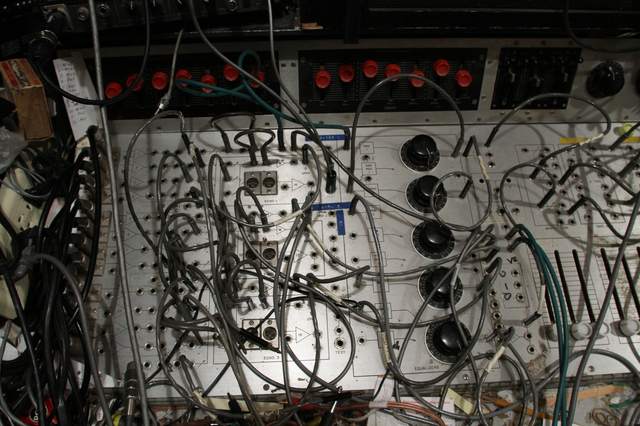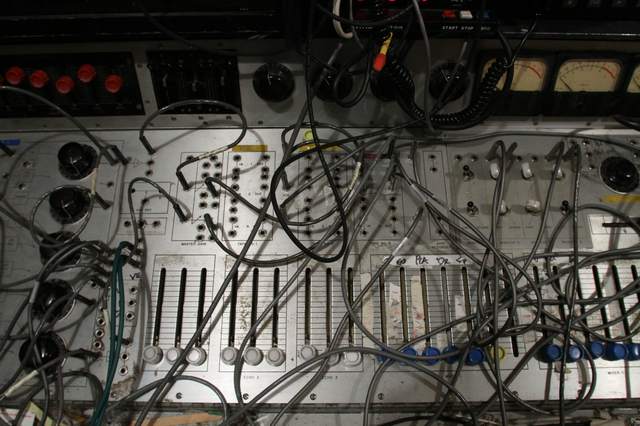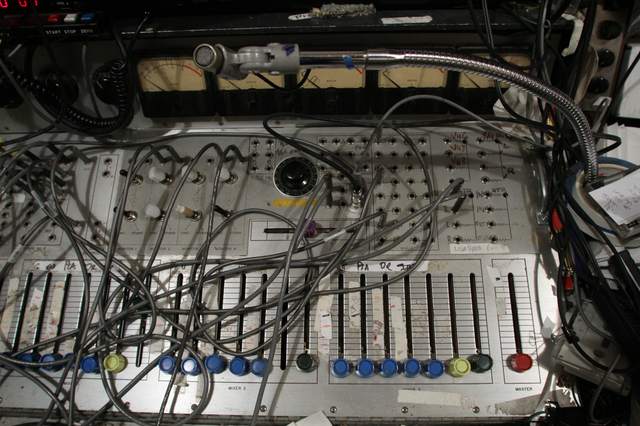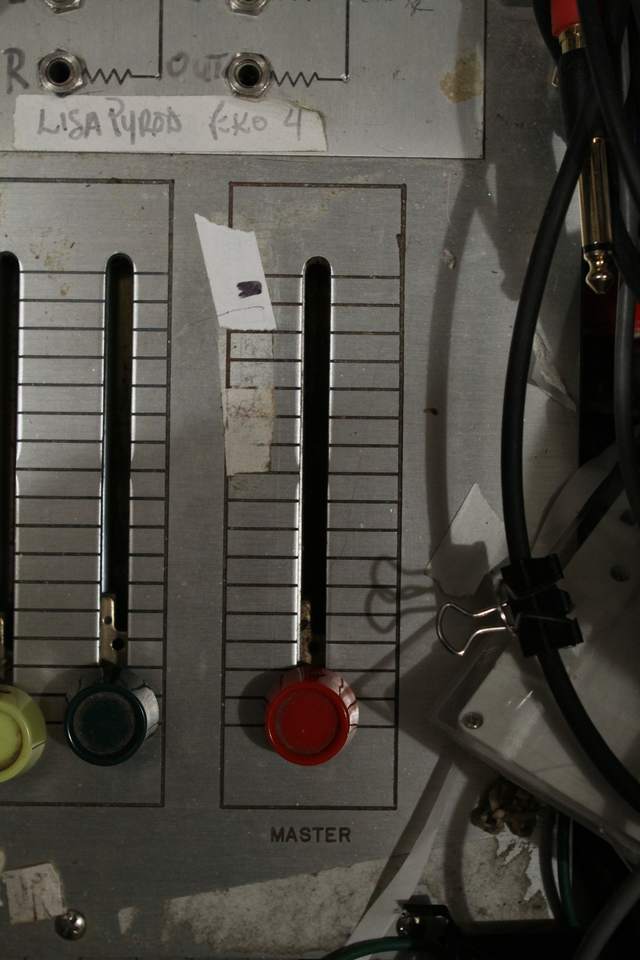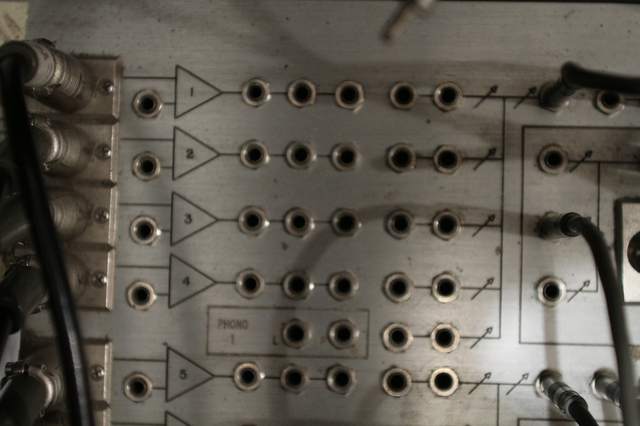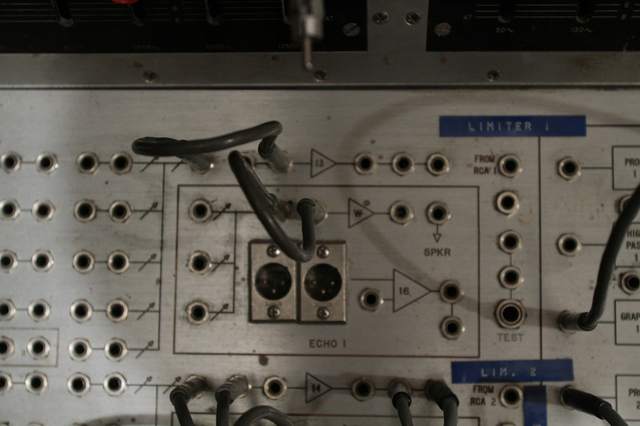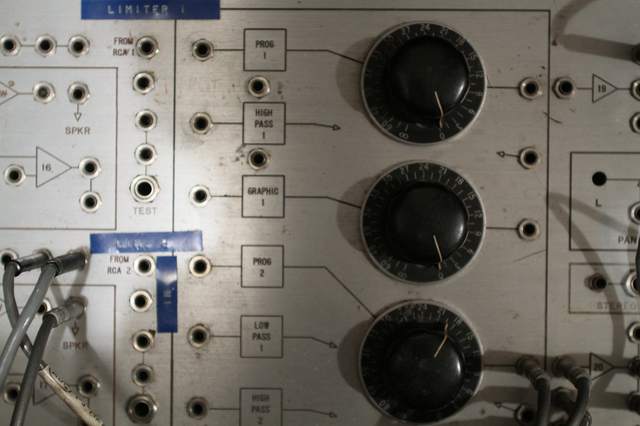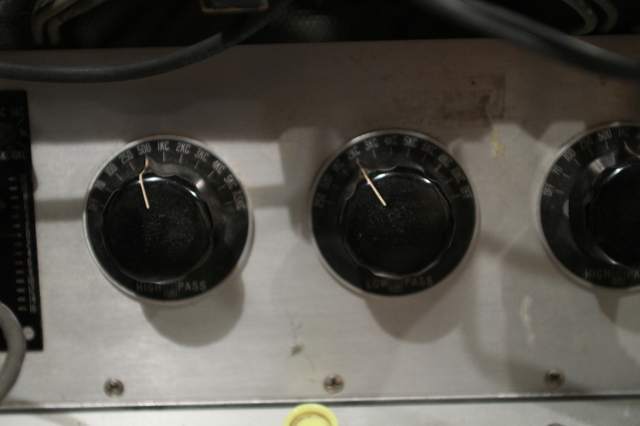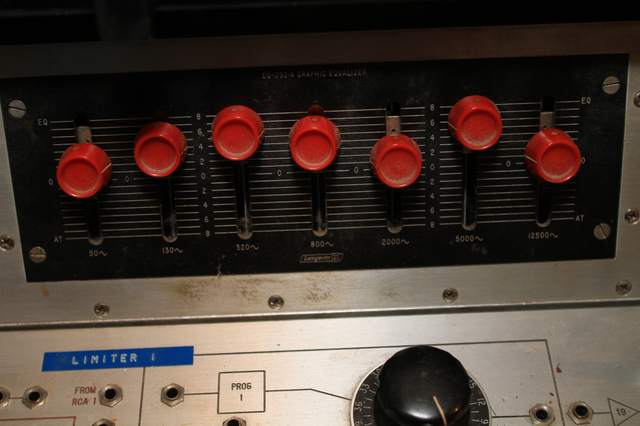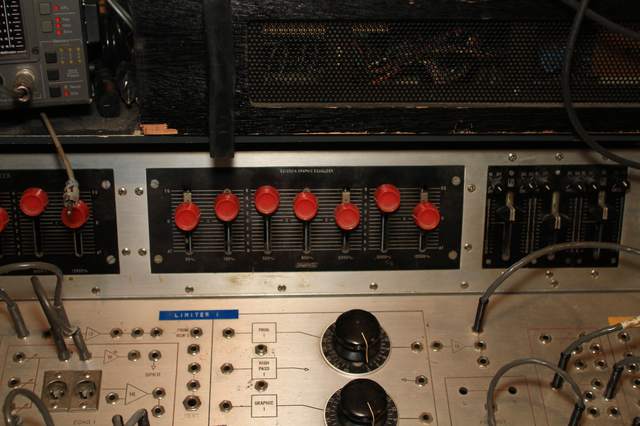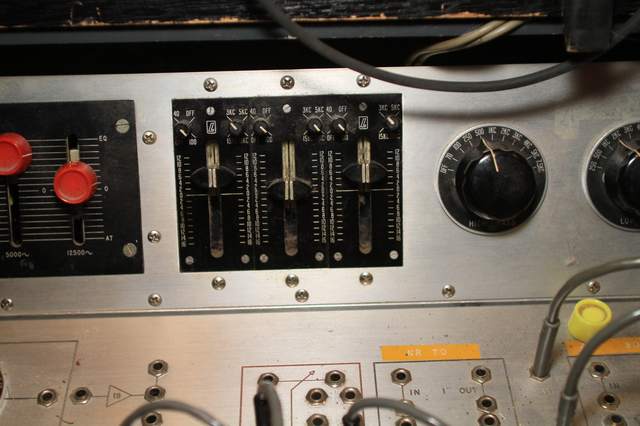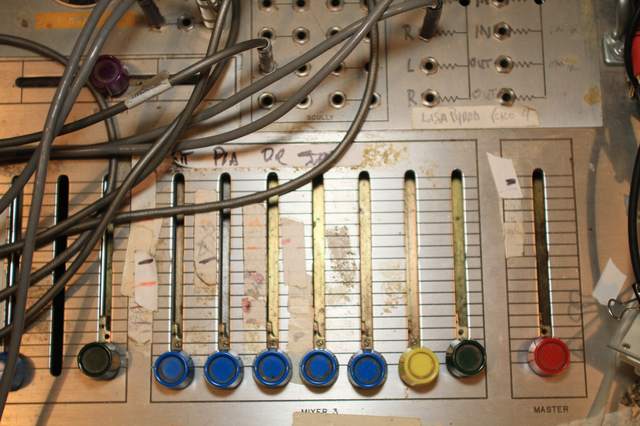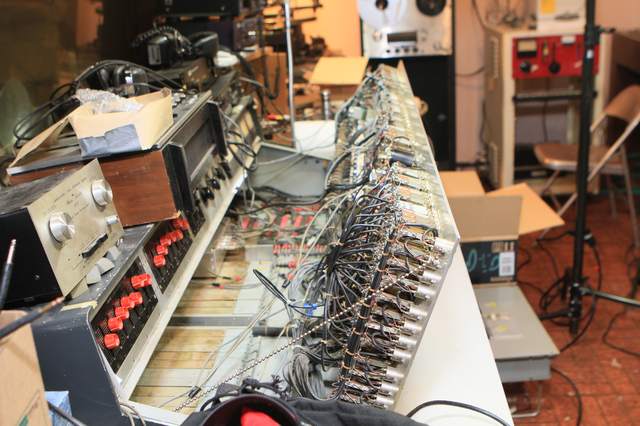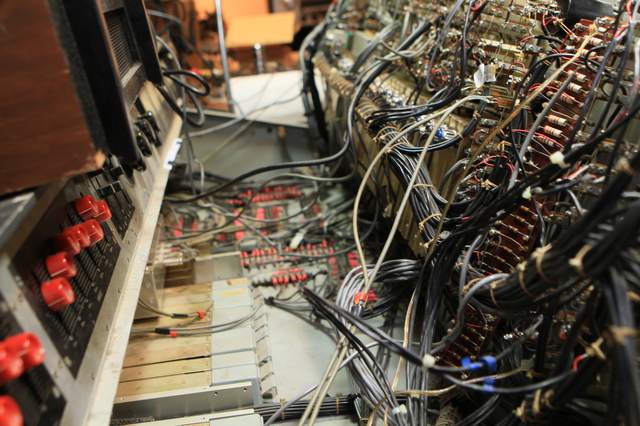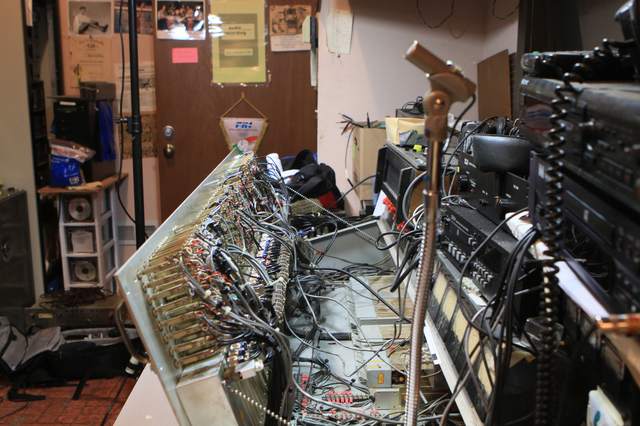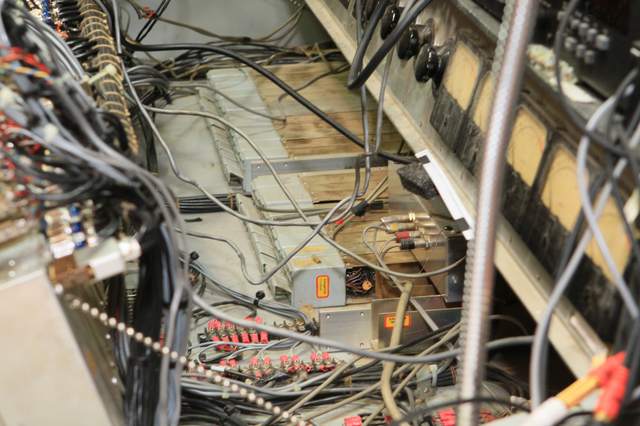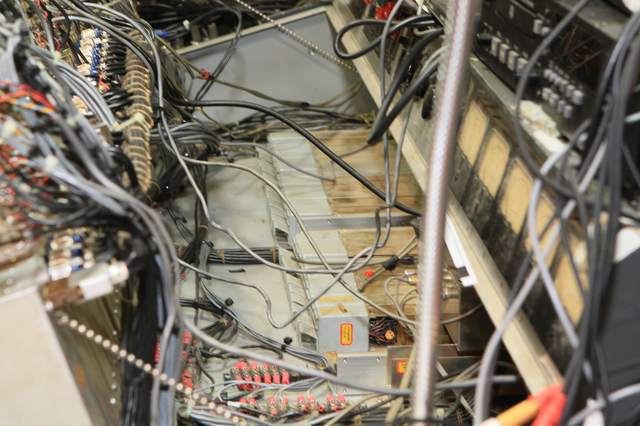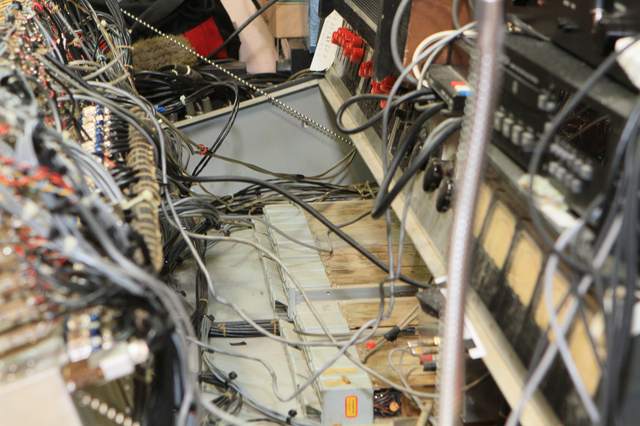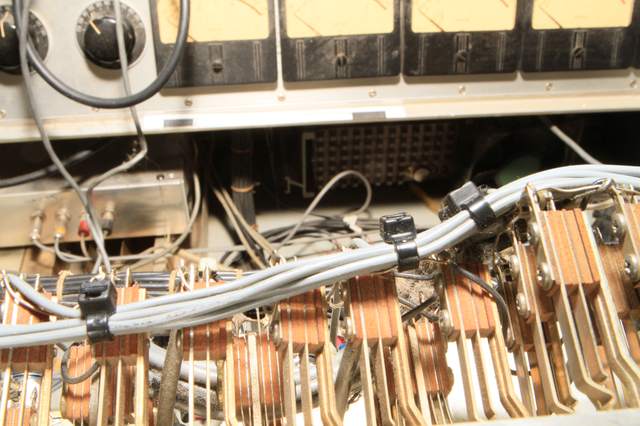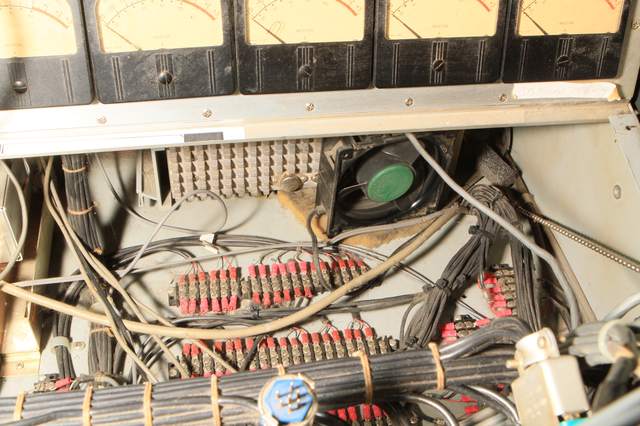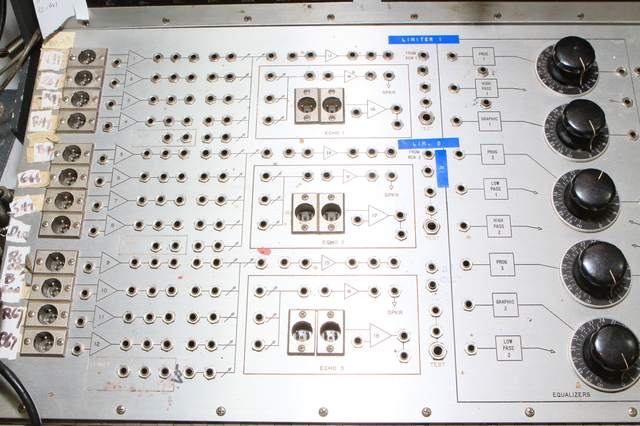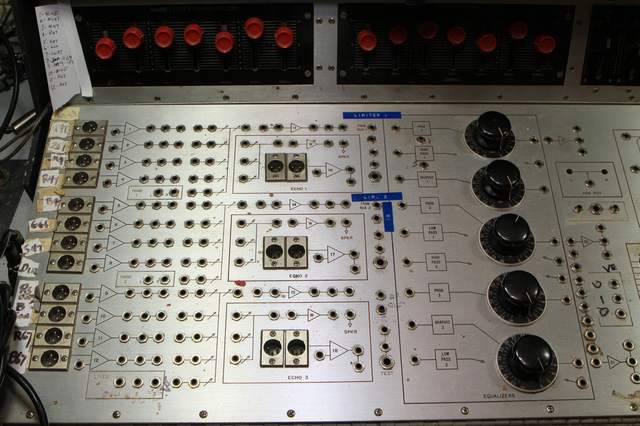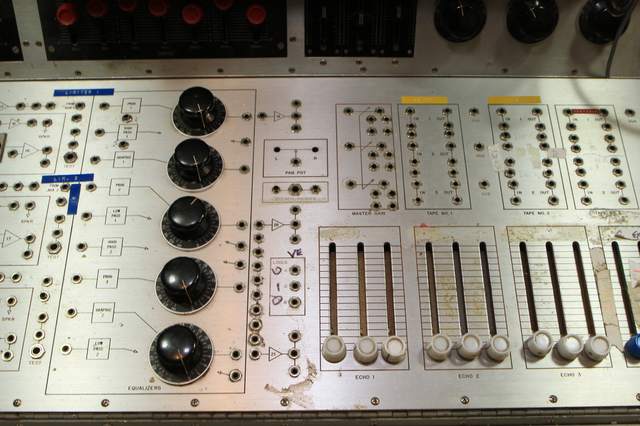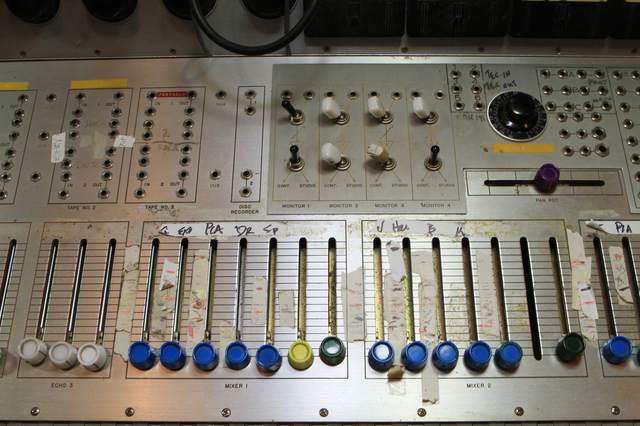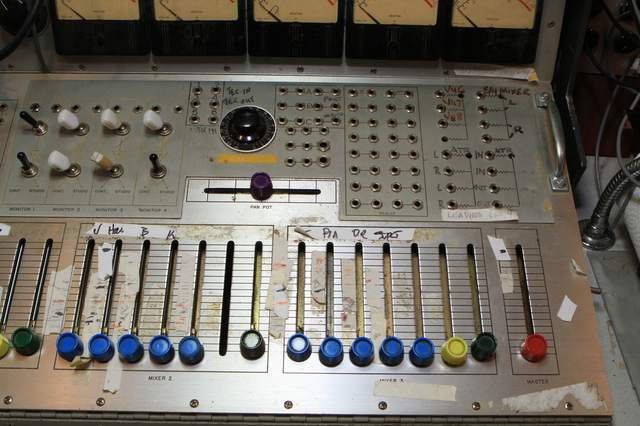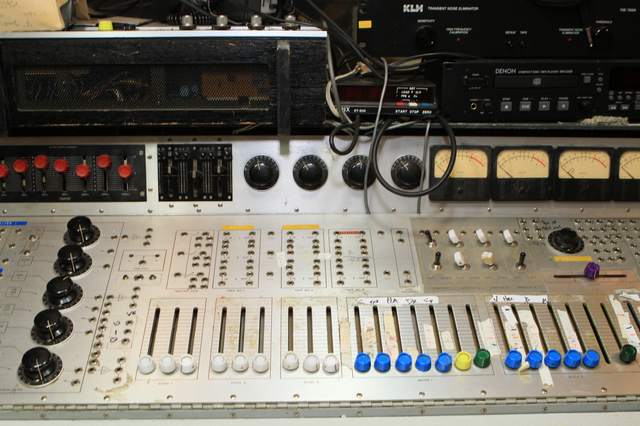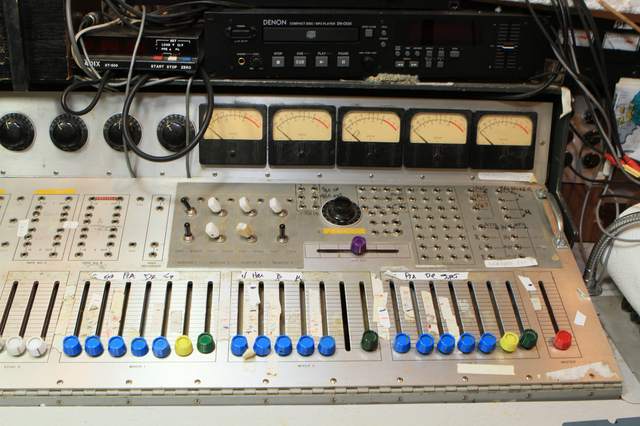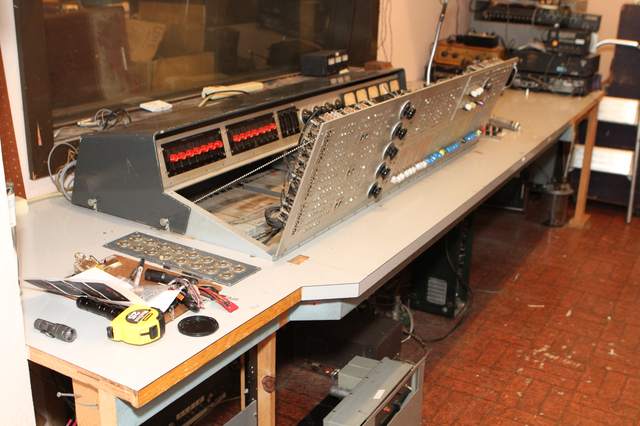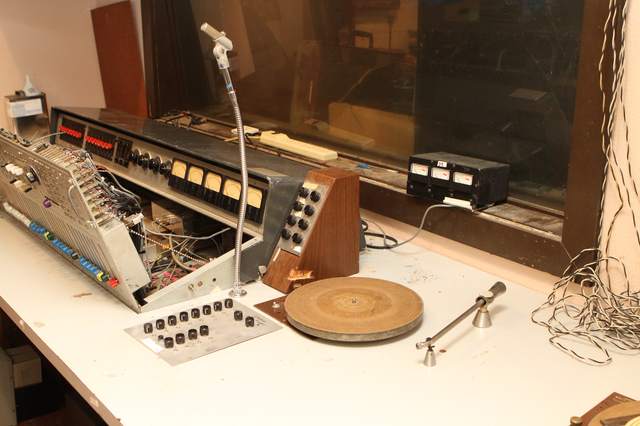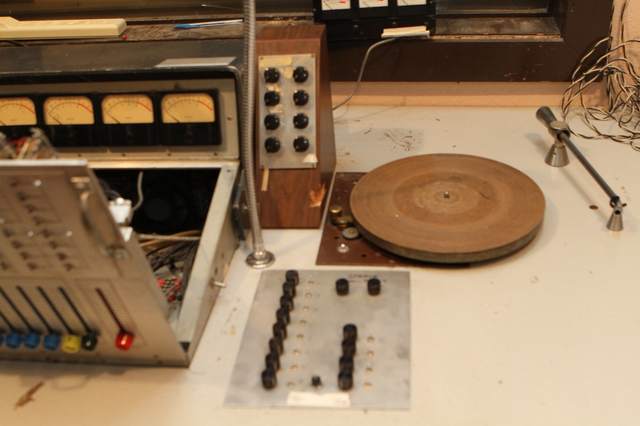
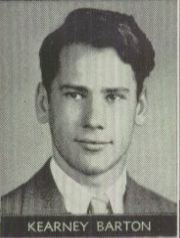
|
With great sadness, I report the passing of Kearney W. Barton, the Dean of Seattle Recording Engineers. He went peacefully at 8pm, Tuesday, January 17, 2012. He had been receiving hospice care since September. |
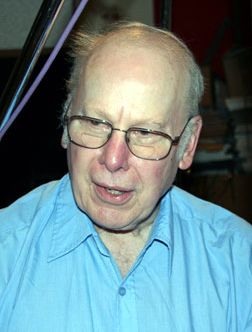
|
Kearney was hired to record it. He showed up with an Ampex 351-2, a mixer of some sort, and 2 Neumann microphones (a U47 and an M49, I think) and 2 altec coke-bottle microphones. How was he going to record a stage play and an orchestra at the same time? The Neumanns were hung over the stage, likely in omni, and the coke-bottles were on the orchestra, maybe 15 feet apart on tall stands, pointed straight up. He monitored on headphones, the same old war-surplus phones that he used thru the 50+ years that his studio existed. He let me hear the mix in the phones, and I was hooked. Sucked in. Down for the count. I still am.
It was my first ever up-close audition of Neumann microphones, and my first-ever of stereo, headphones or not. Later in 1966, a band that I did sound for recorded a single there, and that was my introduction to studio recording. I learned a trick that day that I later put to use about 20 years later (putting a count onto a tape, after the fact, without splicing). It was also my introduction to what equalization could do for a signal. It went way beyond cool.
Here are various items of interest.
Interview of Kearney on KUOW radio
(17mb mp3)
Flckr slideshow of the Kearney and the studio
Wheedle's Groove
- CD of 60s and 70's Seattle funk-n-soul, a fair amout recorded by Kearney.
Wheedle's Groove 2nd release
named for Kearney, with a picture of the house on the cover.
Planet of the Tapes |
Dave Segal's article in the
Stranger
about Kearney and his tape library.
Let The Records Show
Steve Fisk's article about Kearney and his studio.
Vagrant's page
about Glenn White, who designed Kearney's console and the acoustics for the 5th Avenue Studio.
HistoryLink article about Kearney
HistoryLink article about Joe Bowles,
another 50's era Seattle recording engineer (a competitor)
A historylink.org article about early
Seattle Recording Studios.
Detailed description of Kearney's mixing console.
(8mb pdf)
The console hits
Ebay.
The Ebay ad mentioned in the
Stranger
Kearney's Oatmeal Rock "Cookie Power" Recipe
Kearney made batches and batches of these cookies and took them with him to the hydro races on Lake Washington. They were a favorite of all
of the crews there.
The Console
Kearney's console was custom made for him by Glenn White Jr. and Ken Heidt using Langevin components. It's a classic piece of minimalist engineering. I needed to document the mixer/console so it could be sold. This is a really unusual piece because there isn't any switching; the signal flow diagram is engraved into the panel, and all of the signal flow is via TT patch cords. This is really intuitive to anyone with any signal flow sense, and probably completely impenetrable by anyone who really doesn't understand signal flow. In it's usual operating mode, STUN, it's covered with patch cables, and only the area where the faders are is really accessible. There's no per-channel equalization because even the Langevin 251 program equalizers were $270 and the EQ253 graphic equalizers were $600... and those were in 1963 dollars! Thus, this mixer has 2 graphic equalizers and 3 program equalizers, and you patch them in where they are needed. The result is a mixer whose signal path is about as minimalist as you could ever make, and there's no extra BS anywhere. This suited Kearney's style to a T. Finally, don't forget that in 1965, when this mixer was built, the studio had a 3-track machine. It was some time before he got an 8-track, and that's as far as it ever went.The Rest of the Story
In the end, nobody came forward with a serious Jones for this mixer, and it went on eBay. That got it the exposure needed to find someone to buy it. And buy it they did. Finally, in late April, I got the mixer crated, and it was shipped to its new home in Nashville, where it will go on making music for its new owner. Oddly, the new owner is a past resident of the Seattle area and knew about Kearney and the mixer.Someone asked why the mixer wasn't headed for EMP. I think that everyone involved really wanted to see it go on making music. At EMP, it would have just become another artifact, something to be seen but not heard. That's the hard way to check out of this world.
Pictures
Click on any picture to see it at full size (camera is 5184 x 3456 pixels, about 6mb image size). The small images are roughly 640 x 470. I claim copyright on all of them.
